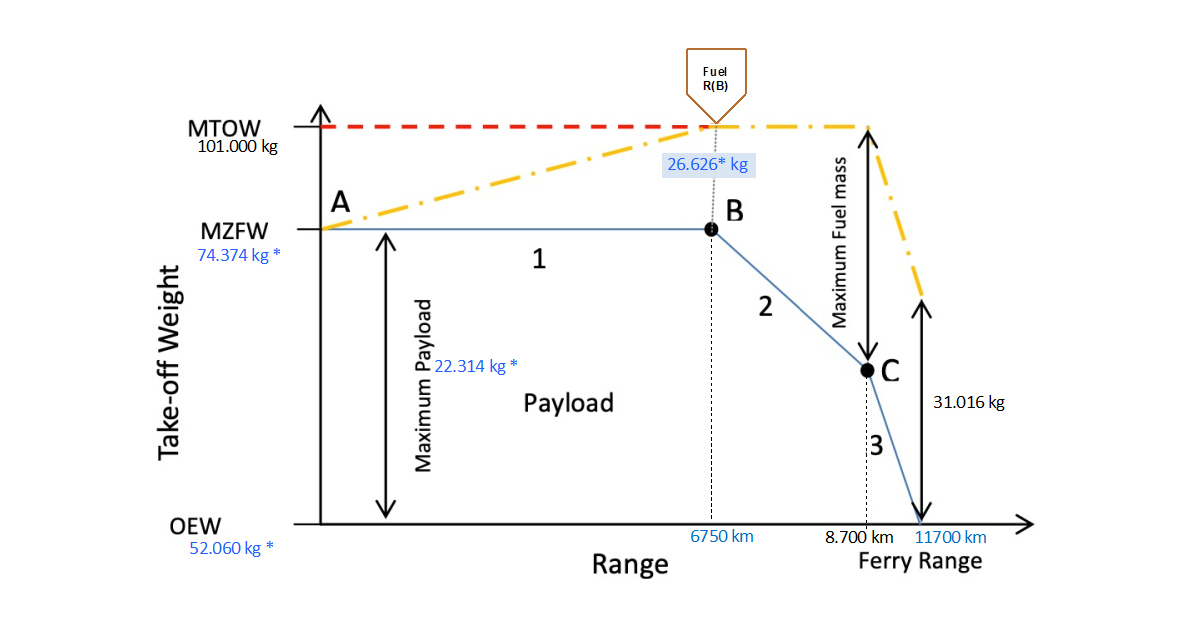

 |
 |
| Download full text: |
 TextFonseca.pdf
Size:
7.7M TextFonseca.pdf
Size:
7.7M |
| Date: | 2021-12-06 |
| Type of work: | Bachelor Thesis |
| Advisor / Examiner: | Dieter Scholz |
| Published by: | Aircraft Design and Systems Group (AERO), Department of Automotive and Aeronautical Engineering, Hamburg University of Applied Sciences |
This work is part of: |
Digital Library - Projects & Theses - Prof. Dr. Scholz ---
http://library.ProfScholz.de
 |
| Download presentation: |
 VortragFonseca.pdf
Size:
1.8M VortragFonseca.pdf
Size:
1.8M |
| PERSISTENT IDENTIFIER: | |
| URN: | https://nbn-resolving.org/urn:nbn:de:gbv:18302-aero2021-12-06.014 (to reach this page) |
| DOI: | https://doi.org/10.15488/19167 |
| ARK: | https://n2t.net/ark:/13960/s221t8xjnwg |
| Associated research data: | https://doi.org/10.7910/DVN/0QHDME (Program) |
| URLs registered with URN: | Show all links associated with this text! |
| CATALOG ENTRY: | |
| DNB: | Check inclusion of this title in German National Library! |
| WorldCat: | Check inclusion of this title in WorldCat! |
| DataCite: | Check inclusion of this title in DataCite! |
| Google Scholar: | Check inclusion of this title in Google Scholar! |
| OpenAIRE: | Check inclusion of this title in OpenAIRE! |
| Semantic Scholar: | Check inclusion of this title in Semantic Scholar! |
| BASE: | Check inclusion of this title in BASE! |
| CORE: | Check inclusion of this title in CORE! |
| Google: | Check inclusion of this title in Google! |
| Keywords, German (GND): | Luftfahrt, Passagierflugzeug, Airbus, Airbus 320 |
| Keywords, English (LCSH): | Aeronautics, Airplanes, Airbus, Airbus A320 (Jet transport) |
| Keywords, free: | Luftfahrzeug, Kraftstoffverbrauch, Luftverschmutzung, Emission, Abgasemission, Kohlendioxidemission, Stickstoffoxide, Kondensstreifen, Umweltbilanz, Φkolabel, Flugzeugkabine, Betriebskosten, Kraftstofftank, CO2, NOX, Reichweite, Langstrecke, aeronautics, airplanes, aircraft, fuel, consumption, product, life cycle, environment, air, pollution, global warming, climatic changes, carbon dioxide, nitrogen oxides, cabins, cost of operation, fuel tanks, range, long-range |
| DDC: | 629.13, 629.133340423, 363.7392, 333.7968 |
| RVK: | ZO 7420 |
© This work is protected by copyright
The work is licensed under a Creative Commons Attribution-NonCommercial-ShareAlike 4.0 International License
CC BY-NC-SA
https://creativecommons.org/licenses/by-nc-sa/4.0

Any further request may be directed to:
Prof. Dr.-Ing. Dieter Scholz, MSME
E-Mail see: http://www.ProfScholz.de
VISIBILITY: (more)
Quote this text:
| ISO 690: FONSECA, Diego, 2021. Direct Operating Costs, Fuel Consumption, and Layout of the Airbus A321LR. Bachelor Thesis. Hamburg University of Applied Sciences, Aircraft Design and Systems Group (AERO). Available from: https://nbn-resolving.org/urn:nbn:de:gbv:18302-aero2021-12-06.014 [viewed YYYY-MM-DD]. |
Major results / graphical abstract:

The Payload-Range Diagram of the Airbus A321XLR calculated from data as given in AIRBUS, 2020. A321, Aircraft Characteristics, Airport and Maintenance Planning. Archived at: https://perma.cc/3HL8-86BT and from other sources. * estimated values.
Fuel Consumption A321 XLR calculated from the Payload-Range Diagram and the tool given at https://doi.org/10.7910/DVN/2HMEHB (Excel file from 2021-07-01). Fuel consumption decreases until the range at Maximum Payload (~6750 km). Further range is only possible with a reduced numbert of passengers along the brown curve (that stands for less than 240 passengers from here on).
Comparison of fuel consumption of Airbus A321 LR, XLR and A330-9neo, high density cabin seating. Fuel consumption for the DOC missions to be examined in the next figure.
Direct Operating Costs (DOC) calculated with the TU Berlin Method, standard cabin, without additional cargo. Calculations: See "Associated research data".
JetBlue A321 LR Cabin Design (archived).

 Prof. Dr. Scholz
Prof. Dr. Scholz
 Aircraft Design and Systems Group (AERO)
Aircraft Design and Systems Group (AERO)
 Aeronautical Engineering
Aeronautical Engineering
 Department of Automotive and Aeronautical Engineering
Department of Automotive and Aeronautical Engineering
 Faculty of Engineering and Computer Science
Faculty of Engineering and Computer Science
 Hamburg University of Applied Sciences
Hamburg University of Applied Sciences